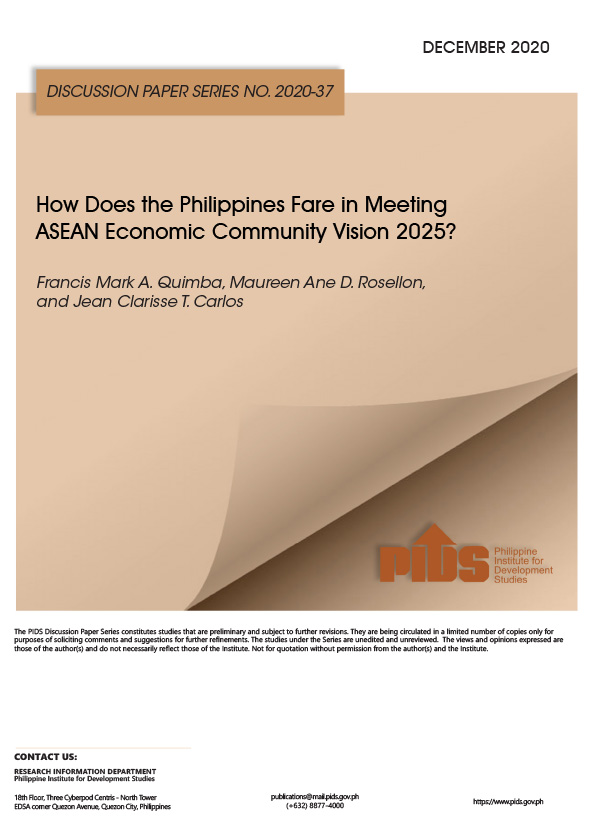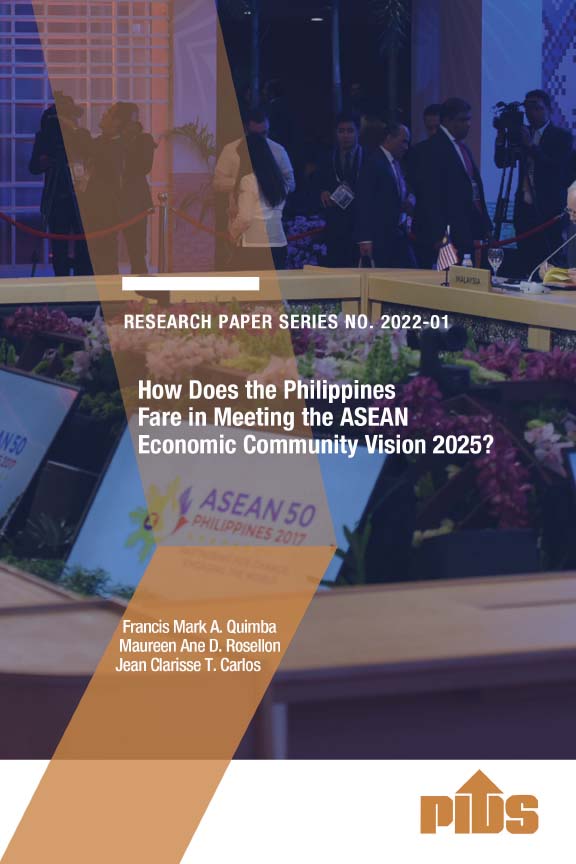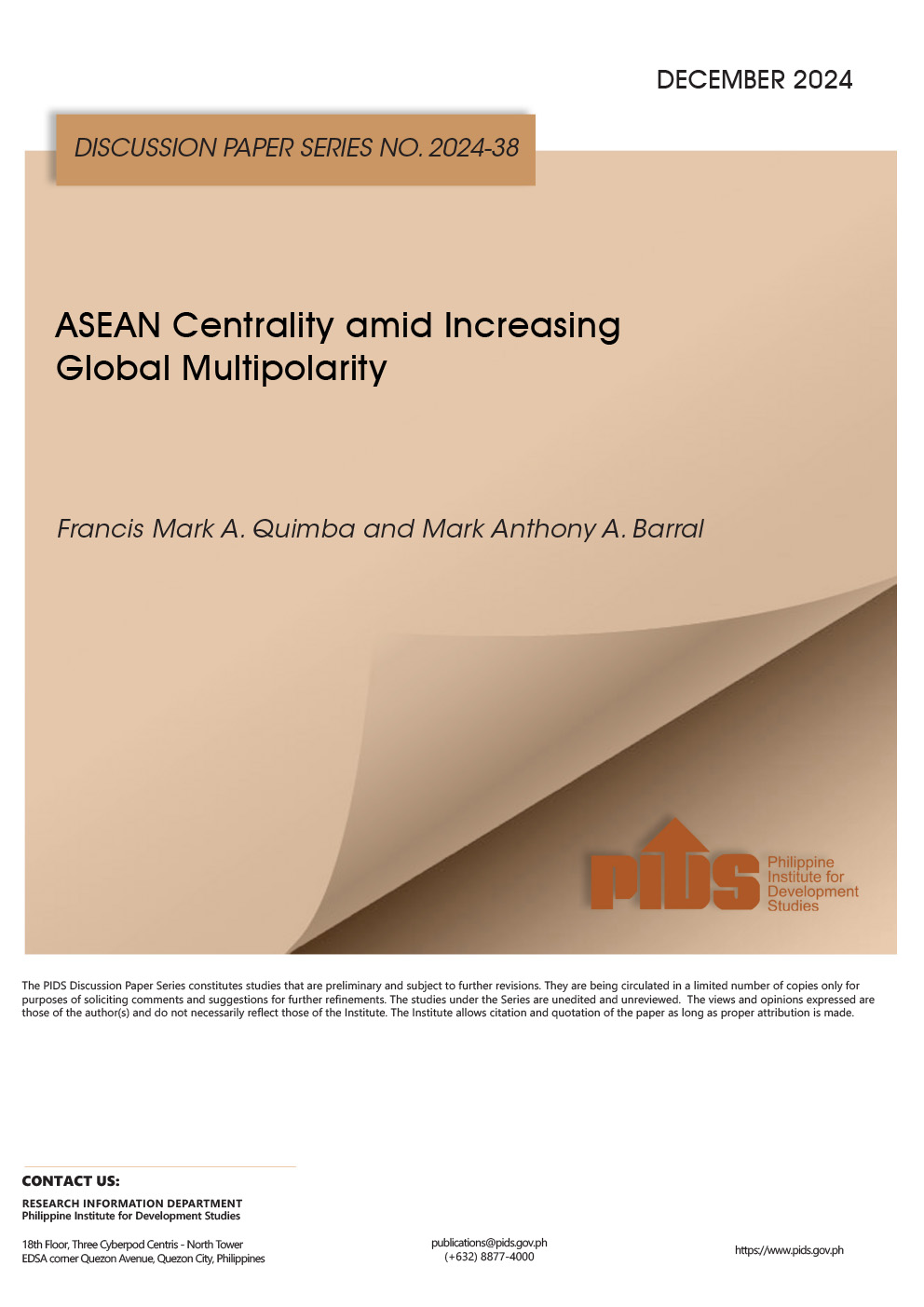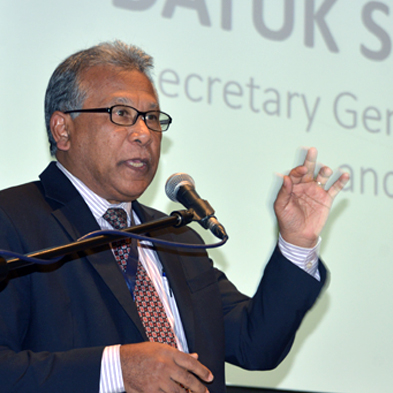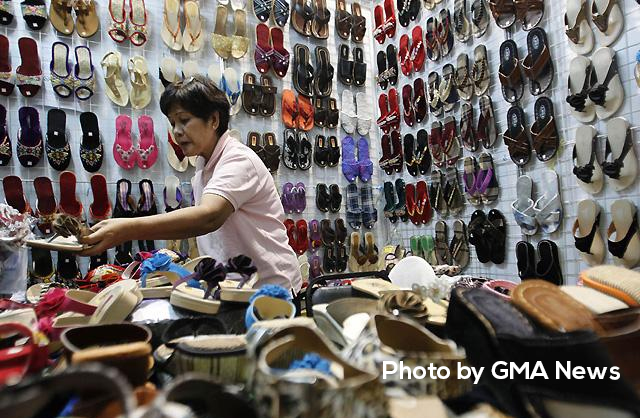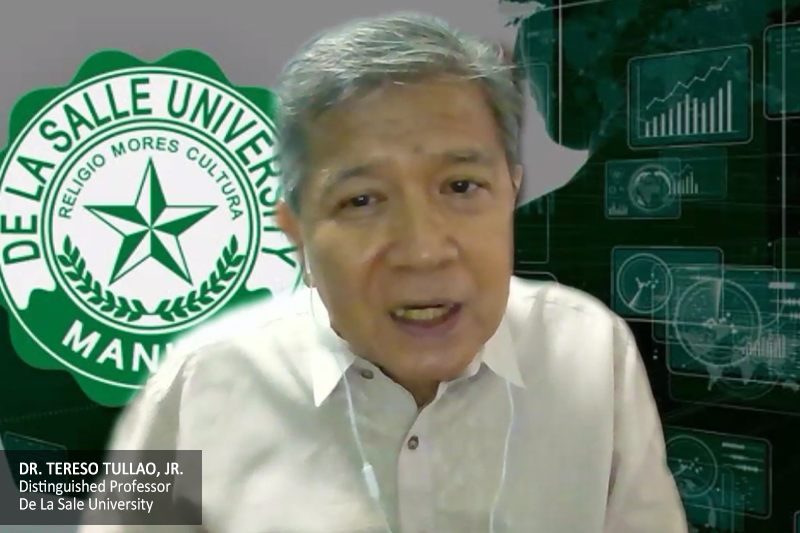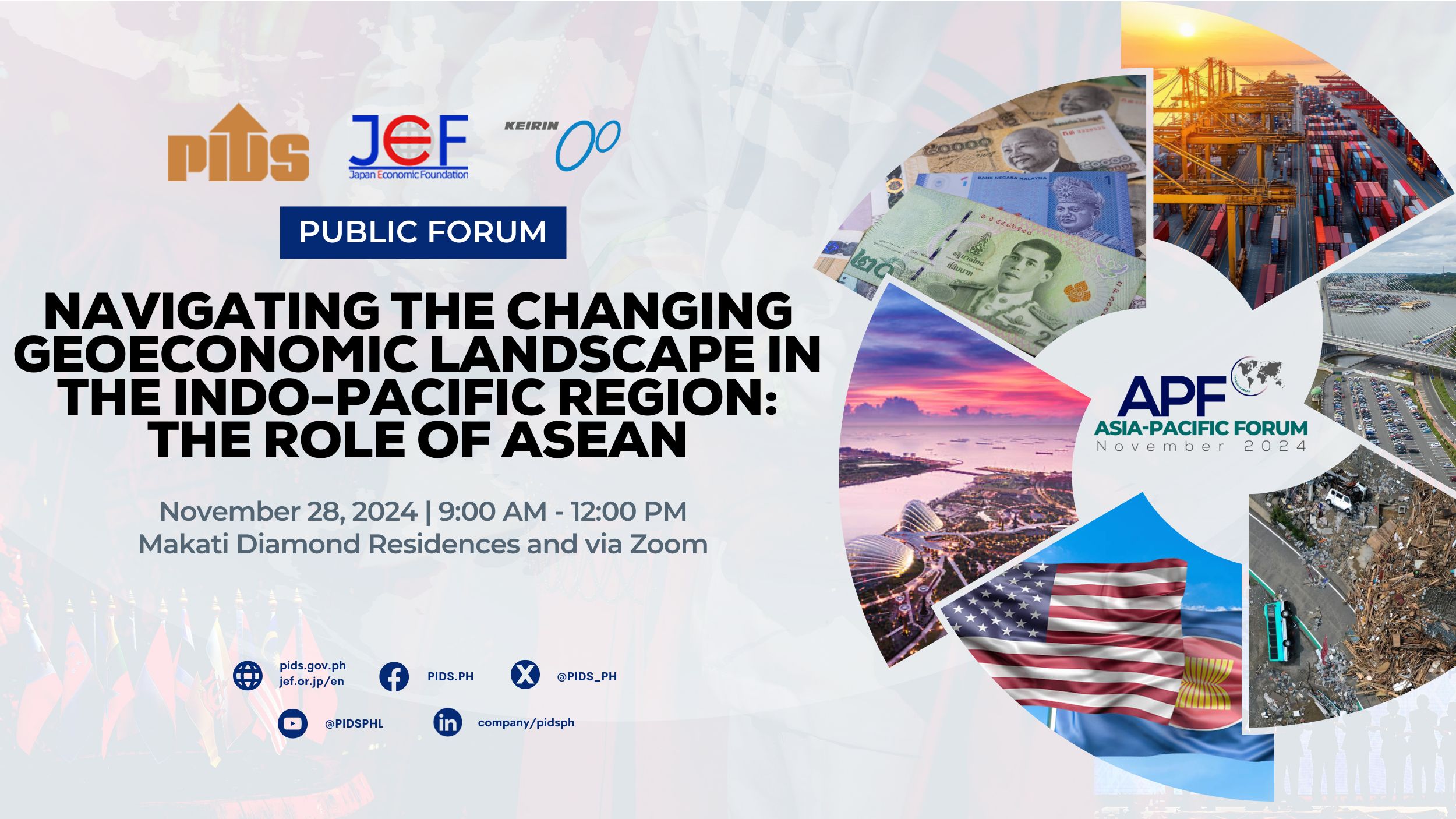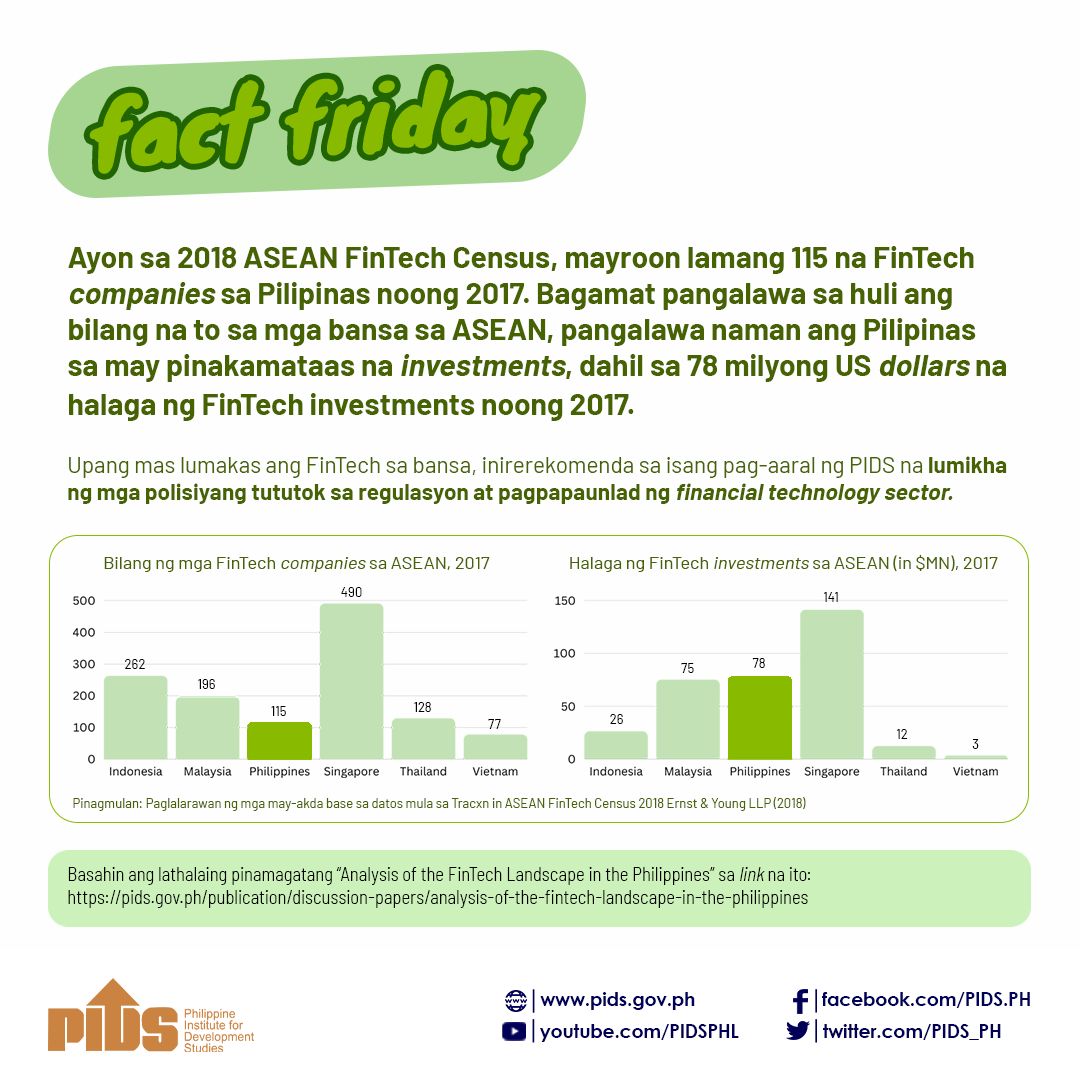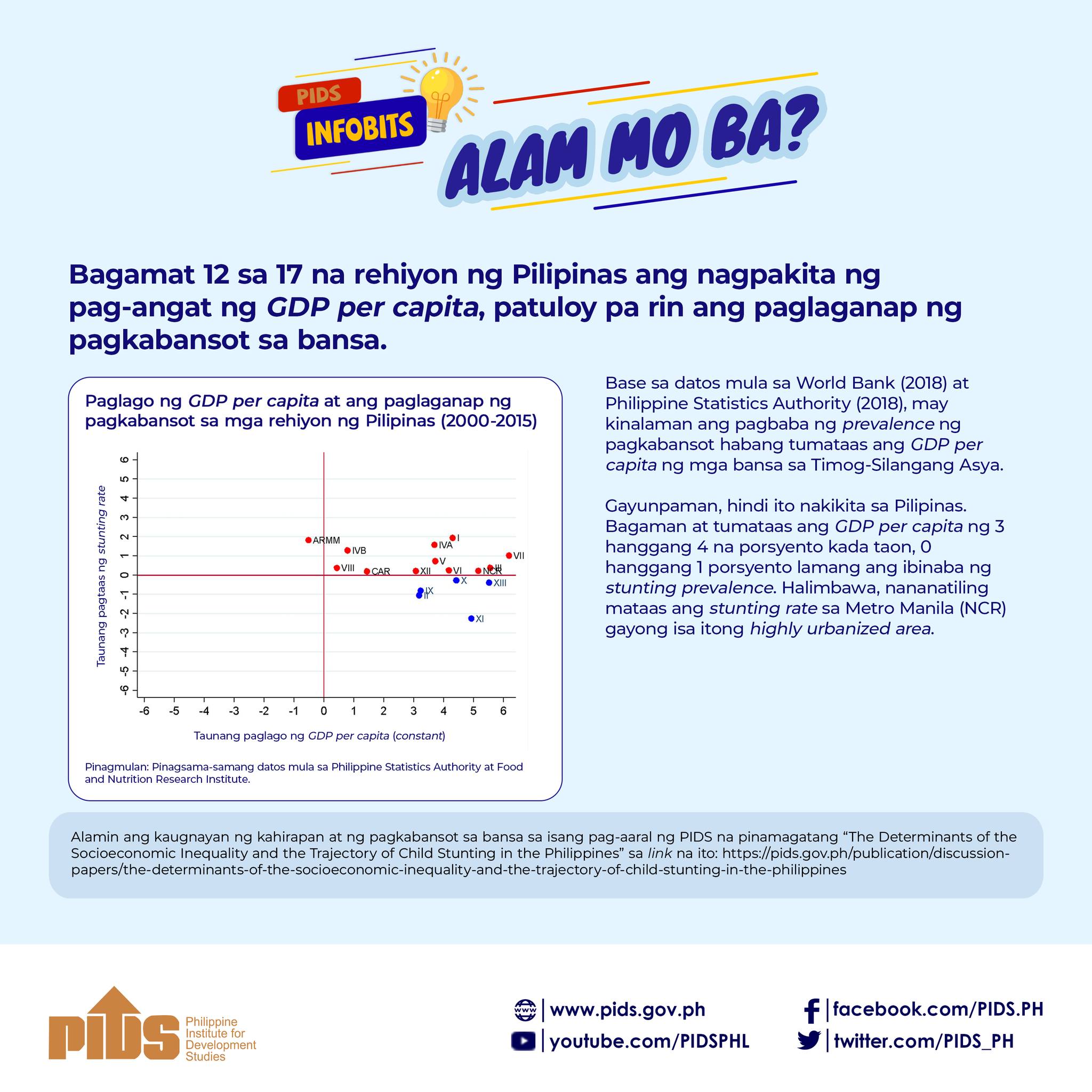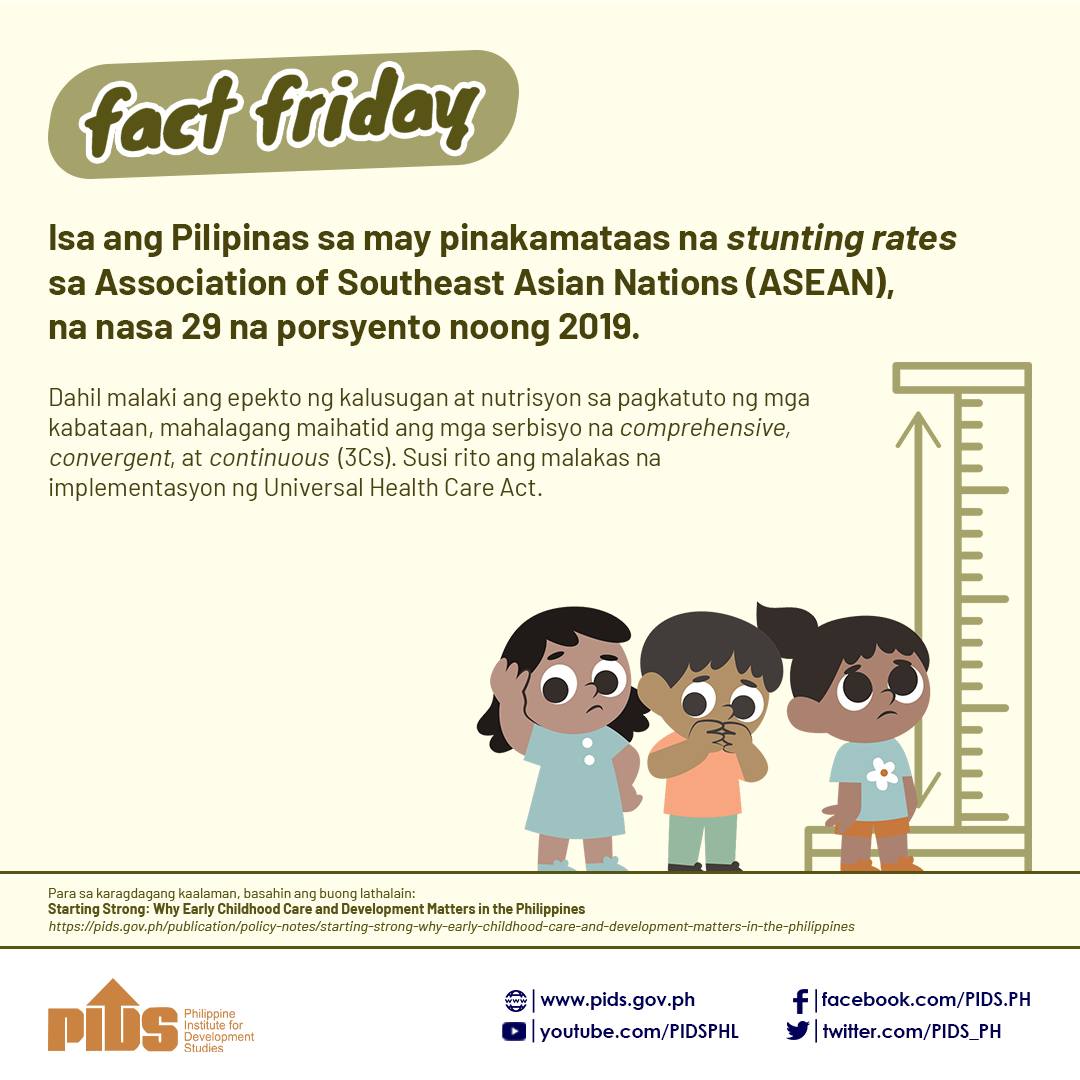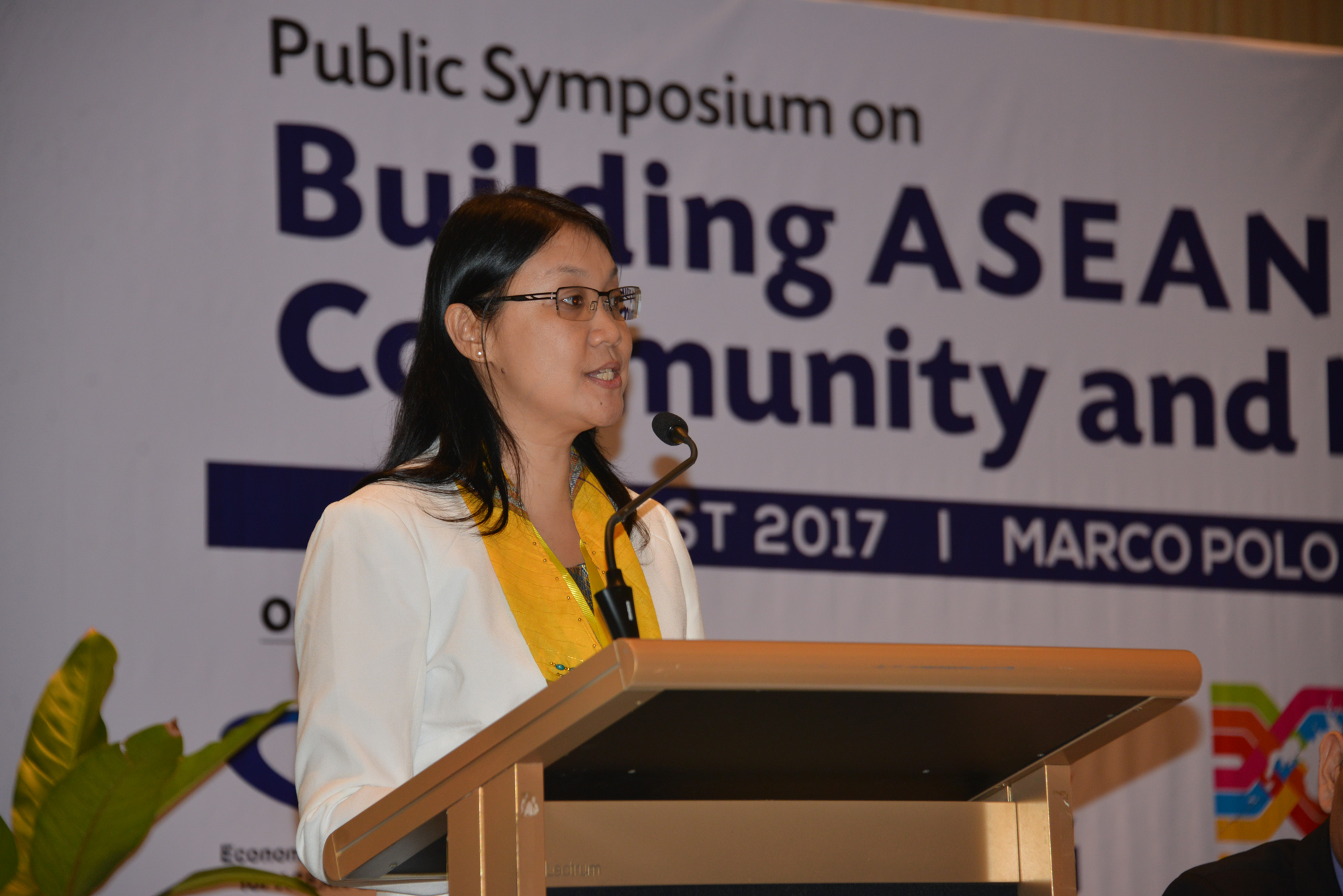
The business sector in the country has the lowest appreciation of the benefits that come with its membership in the Association of Southeast Asian Nations (ASEAN). This was according to Dr. Sheila Siar, research information director at the Philippine Institute for Development Studies (PIDS).
Siar shared this in her presentation of the Philippine results of the study “What Does the ASEAN mean to ASEAN peoples?” during the Public Symposium on Building the ASEAN Socio-cultural Community held recently in Davao City.
The symposium was organized by PIDS and Jakarta-based Economic Research Institute for ASEAN and East Asia (ERIA), in partnership with the Mindanao Development Authority (MinDA) and the ASEAN Society.
According to Siar, the ERIA-funded study, which was also conducted in other ASEAN member-states, showed that Filipino respondents from the business sector agree that the country’s membership in ASEAN is important in increasing access to international markets, travel, and jobs, as well as in maintaining peace and stability.
These benefits, however, are perceived by the business sector as meagerly impacting the county, she said.
Perceptions and challenges
Siar pointed out that this response can be attributed to issues related to trade, investment, and regulation that continue to affect the business sector. As an example, she cited a PIDS study conducted by Dr. Erlinda Medalla and Melalyn Mantaring of the PIDS-led Philippine APEC Study Center Network. The study showed the negative effects of nontariff barriers on the Philippines’ trade activities with other ASEAN countries.
Corruption also remains a major issue in the ASEAN region.
“The fact that corruption is the most pressing problem overall suggests that the respondents see corruption—and related governance problems—as a critical bottleneck to production efficiency, investment attractiveness, competitiveness, and possibly even development,” said Lydia Ruddy, ERIA Director of Communications.
Moreover, the business sector reported moderate awareness of ASEAN. Siar said this was also found in other respondent groups, including those from government, academe, and civil society. In general, all of them registered moderate awareness of ASEAN and moderate identification as ASEAN citizens.
This can be explained in part by the low media coverage of ASEAN, which also figured in other ASEAN member-states.
In the case of Indonesia, Dr. Alexander Chandra, associate fellow of the Habibie Center in Jakarta, mentioned that the media only focuses on domestic or negative news. “ASEAN news is [considered] not controversial, hence ‘not sexy’ for media coverage,” said Chandra.
Increasing awareness and appreciation
Dr. Ponciano Intal, Jr., ERIA senior economist, emphasized the importance of local and traditional leaders in boosting awareness and sense of community in the ASEAN region.
“Perhaps, the sultanates of Mindanao, Brunei, Malaysia, and Indonesia can take the lead in creating certain agreements that support regional ASEAN community-building,” Intal proposed.
Elaine Tan, ASEAN Foundation executive director, underscored the need to engage the youth in ASEAN’s activities as they comprise the biggest chunk of the region’s population.
Siar agreed with Tan, adding that “maximizing schools as avenues for instilling awareness and appreciation of ASEAN among the youth is important because they are our future leaders.” The respondents concurred with the idea of using school textbooks to educate young people about ASEAN. Building awareness of the association, many expressed during the focus group discussions, should start in primary school.
Other recommended strategies include holding cultural heritage activities that emphasize unity in diversity and increased use of traditional and social media. ###
Siar shared this in her presentation of the Philippine results of the study “What Does the ASEAN mean to ASEAN peoples?” during the Public Symposium on Building the ASEAN Socio-cultural Community held recently in Davao City.
The symposium was organized by PIDS and Jakarta-based Economic Research Institute for ASEAN and East Asia (ERIA), in partnership with the Mindanao Development Authority (MinDA) and the ASEAN Society.
According to Siar, the ERIA-funded study, which was also conducted in other ASEAN member-states, showed that Filipino respondents from the business sector agree that the country’s membership in ASEAN is important in increasing access to international markets, travel, and jobs, as well as in maintaining peace and stability.
These benefits, however, are perceived by the business sector as meagerly impacting the county, she said.
Perceptions and challenges
Siar pointed out that this response can be attributed to issues related to trade, investment, and regulation that continue to affect the business sector. As an example, she cited a PIDS study conducted by Dr. Erlinda Medalla and Melalyn Mantaring of the PIDS-led Philippine APEC Study Center Network. The study showed the negative effects of nontariff barriers on the Philippines’ trade activities with other ASEAN countries.
Corruption also remains a major issue in the ASEAN region.
“The fact that corruption is the most pressing problem overall suggests that the respondents see corruption—and related governance problems—as a critical bottleneck to production efficiency, investment attractiveness, competitiveness, and possibly even development,” said Lydia Ruddy, ERIA Director of Communications.
Moreover, the business sector reported moderate awareness of ASEAN. Siar said this was also found in other respondent groups, including those from government, academe, and civil society. In general, all of them registered moderate awareness of ASEAN and moderate identification as ASEAN citizens.
This can be explained in part by the low media coverage of ASEAN, which also figured in other ASEAN member-states.
In the case of Indonesia, Dr. Alexander Chandra, associate fellow of the Habibie Center in Jakarta, mentioned that the media only focuses on domestic or negative news. “ASEAN news is [considered] not controversial, hence ‘not sexy’ for media coverage,” said Chandra.
Increasing awareness and appreciation
Dr. Ponciano Intal, Jr., ERIA senior economist, emphasized the importance of local and traditional leaders in boosting awareness and sense of community in the ASEAN region.
“Perhaps, the sultanates of Mindanao, Brunei, Malaysia, and Indonesia can take the lead in creating certain agreements that support regional ASEAN community-building,” Intal proposed.
Elaine Tan, ASEAN Foundation executive director, underscored the need to engage the youth in ASEAN’s activities as they comprise the biggest chunk of the region’s population.
Siar agreed with Tan, adding that “maximizing schools as avenues for instilling awareness and appreciation of ASEAN among the youth is important because they are our future leaders.” The respondents concurred with the idea of using school textbooks to educate young people about ASEAN. Building awareness of the association, many expressed during the focus group discussions, should start in primary school.
Other recommended strategies include holding cultural heritage activities that emphasize unity in diversity and increased use of traditional and social media. ###

